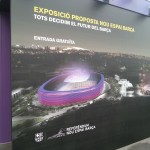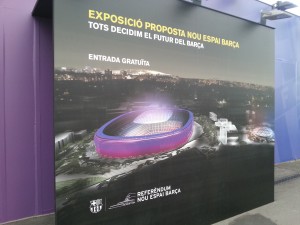
Formula 1 is becoming more and more of an international sport with grand prix being held all over the world. Two trends can be noticed. One of them is the focus on speed, especially the brand new tracks that are designed by Hermann Tilke. Many of the new venues were born in his mind, which results in many F1 fans considering those tracks monotonous. The circuits in Singapore, Abu Dhabi, Bahrain and other locations were all designed by the German and do show a lot of similarities.
These new venues also often take the place of some beloved classics. In the US for example, where Indianapolis was replaced by the ‘Circuit of the Americas’. The same might be happening later on with Great Britain, as Silverstone might be removed from the calendar to be replaced by.. London. The capital city near the Thames is currently investigating the option of creating a street circuit for the top class of racing. And that’s the second trend: street circuits are more spectacular than others. So will London become the Monte Carlo of the Thames?
Monte Carlos is always one of the answers when you ask Formula 1 adepts about the most beautiful tracks, just like Belgium’s Spa-Francorchamps. The street circuit in Monaco is by far the best known and is unique as well as challenging. One small mistake on the track next to the Mediterranean Sea often means the end of your race. It takes precision, focus and a lot of skill to race here. Ayrton Senna’s “Driving to perfection” is what you need when racing past Casino, Rascasse, Sainte Dévote and of course also through the famous tunnel. The race puts Monaco on the map, that’s for sure.
In 2008, two more street circuits entered the calendar. One of them brings the drivers to the nightly artificial lights of Singapore’s Marina Bay. The fact that Singapore hosted the Youth Olympic Games two years later and has almost completed building the ‘Singapore Sports Hub’ proves that hosting an F1 grand prix is part of an all-round sports policy, which can only be fully supported of course. The second new street circuit got the F1 circus to Spain where the drivers could race on Valencia Street Circuit, the first time F1 cars chased each other in a Spanish city since Emerson Fittipaldi and his competitors did just that on Barcelona’s Montjuic in the seventies. Because of some financial issues, the grand prix in Valencia is no longer part of the F1 calendar as of this year and is replaced by yet another new street circuit: the one in Sochi, home of the most recent Winter Olympics.
And so, in a few years, London might be the next one to be added to the calendar, whilst other cities such as Madrid and Paris are rumoured to be considering this option as well. Cities that are already very well known as destinations for city-trips but now also see extra value in Formula 1. Knowing the sport is becoming more and more international, the possibilities of city marketing are vast. Because let’s be honest, had you already heard of Sochi or Lake Placid if they hadn’t hosted the Olympics? Or did you know Belo Horizonte before it was announced as a host city for the upcoming FIFA World Cup? Would you have known the cities of Hoogerheide and Sint-Michielsgestel if they hadn’t created some world champions in cyclo cross? Let me tell you: sports can extend your geography knowledge! Though of course cities like London are definitely better known than – with all due respect – Pyeongchang…
So city marketing. When Singapore is hosting the Formula 1 grand prix, they won’t mind showing the Marina Bay Sands Hotel. Same goes for the GP in Valencia that won’t forget to broadcast images of its main touristic hotspots as well. It wouldn’t be a coincidence that the F1 cars would pass along the Thames, Buckingha Palace, Trafalgar Square and The Mall when racing through Queen Elizabeth II’s capital city. On the few hours that the Grand Prix would be broadcasted, billions of people all over the world would be reminded of what a beautiful city this is. London has definitely learnt from its experiences in hosting the ‘Grand Départ’ of the 2007 edition of the Tour de France and will see that confirmed when the same road cycling race will be passing through the British capital once again on the 5th of July.
So what we have here is a sport that is becoming more and more international under the influence of Bernie Ecclestone and more and more focused on speed and spectacle. You can compare it to the cycling world that is no longer focused on European countries, but now also has races in countries and regions such as Qatar, Oman, California, Langkawi, Australia, Burkina Faso and so on. Those places also realise that they are shown on international TV channels from all over the world. Throw in some extra touristic info like the one you get when watching ‘la Grande Boucle’ and you get the picture.
It is expected that the local ministers will clear the road for a street circuit in London this week. Especially some adaptations to the rules and laws about safety and speed (limits) have to be looked into, as well as decisions about traffic regulations and so on. It means that we shouldn’t be expecting the London Grand Prix too soon either, but it just might be coming somewhere in the next couple of years.
The consequence of this being that Silverstone might be removed from the calendar, which will make the lovers of the sport not too happy. Yet, the return on investment might be a lot higher with the British Grand Prix moving to London. There is always room for banners and logos of sponsors, no matter where the race takes place, but where you would only see stands around the track on a regular circuit, you would now also see monuments, cathedrals, palaces, casinos, fancy hotels and so on. It might give an extra boost to the already large amount of tourism in the city. The other cities considering doing this, such as Paris and Madrid, might be following London’s example sooner than expected then.
Taking this higher return on investment into account, it might also be a solution for other countries where holding a Formula 1 Grand Prix is no longer a profitable business. As a Belgian, I would find it extremely sad to see one of the most beautiful race tracks in the world disappear from the F1 championship, but from a financial point of view it might be worth considering organizing a street circuit with F1 cars taking a turn around the Atomium in Brussels, racing alongside the harbour in Antwerp or overtaking one another in the shadow of the beautiful belfry of Bruges. Also, the supporters might be easier to convince coming to see the spectacle in one of those cities rather than in the forests near Liege. As a fan, I would not like it as I find the Spa-Francorchamps track way too beautiful to let go. Yet, in a sport where commerce is becoming more and more important every year, a Belgian Street Circuit might be worth considering. On the other hand, seeing F1 cars racing on our beloved cobble stones is highly unrealistic. So for now, we’ll have to do with ‘TopGear’’s Jeremy Clarkson driving a McLaren P1 through the stunning city centre of Bruges, with over 350 million people all over the world seeing that on their television screens.. Good enough.
This blog was written for and published (in Dutch) on Belgian sports news website Sportnext.be.
Source of the picture: Flickr – Mash247.






Average Rating